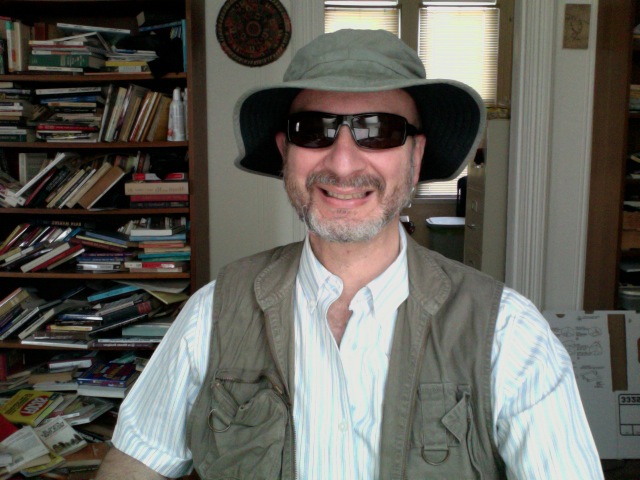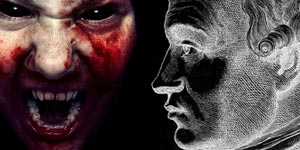Self-knowledge is very difficult to obtain, but it is surely the most valuable desideratum. It can save us from an enormous amount of folly and, therefore, from an equally enormous amount of suffering. Furthermore, self-knowledge is the prerequisite for self-realization, for liberating wisdom, for a transformed existence, for blessedness, for everlasting felicity. Might one conclude, then, that self-knowledge is a boon that everyone is most eager to obtain? So one would think, but as the song says: “It ain’t necessarily so.”
Knowing oneself is actually the least thing that human beings desire! It’s not simply that everyone has better things to do with their time than seeking to know themselves. In point of fact, nothing is more dreaded than self-knowledge. We fear it, for we intuitively know that it would undermine the very foundations of our existence. After all, being who we are is predicated on being in the dark. (In that sense, homo sapiens bear a certain phylogenetic resemblance to various molds, mildews and other fungi that cannot endure sunlight. This resemblance appears to be more apparent in some people.)
In any case, when we know who we are, the jig’s up. We can no longer be ourselves anymore, at least not in the way we had been. Ultimately, this is a very good thing, for the perception that what we are attempting to accomplish is a contradiction of terms, and therefore impossible, drives us to new “stages along life’s way,” to use Kierkegaard’s phase. But, dying to who we are is never an easy thing. As we know, it can feel like the end of the world, for it is that in a certain sense.
There are, though, rare times when we are ready to risk everything, and so we, in effect, declare: “OK, light of self awareness, shine upon me. I am ready, so do thy worst.” This risk-taking is far more likely to occur when we are in despair. Feeling that we have little to lose, we are more daring with our self-questioning. It can also happen — and this is even rarer — that we might engage in self-examination out of a sheer lust for a real life. Whatever the reason, such windows of opportunity do not last very long, for the light of truth is too withering and so closure sets in, until the person is ready again. That said, here is a very brief map, of the road to self-knowledge and self-realization, for those determined to know themselves.
1.Harness the Power of the Negative
The quickest way to know yourself is by examining the particular shape that your suffering takes. That shape can, upon examination, bring into bas-relief your hidden set of assumptions, regarding the path to happiness and fulfillment. Whether you realize it or not, you have been laboring and suffering under that set of assumptions. A person might, for example think: “I had assumed that being popular, with the public, would bring me happiness. Now I find myself popular, but more miserable than ever. I really need to question my assumptions.” Or a person might think: “I believed that devoting myself to my husband and children would be sufficient to bring me fulfillment, but there is still something missing. I must discover what it is.”
In the natural course of human life, people do, in fact, ask questions. They seek to know who they are and what life is about. But, if we wish to make faster progress — whether we be driven by perplexity, despair or a lust for life — we must be more ruthless with our questioning. Jacob pinned down the Angel, so it is that we must seize this life of our, interrogate it, and not let it go till it blesses us with its secrets.
In any case, suffering points to the contradictory and, therefore, impossible nature of our efforts to attain happiness and fulfillment. Take, for example, a relationship. People invariably place a contradictory set of requirements upon each other and when our partner fails to deliver we feel let down. Self-knowledge consists in uncovering those requirements. Few people ever think: “What am I really asking?” One may think that one knows the answer to that question, but probably not.
It has been said that when the gods wish to punish us, they answer our prayers. So it is that it’s more devastating to be disillusioned by getting what we desire, than disappointed failing to obtain it. For example, we finally obtain the job that we have been gunning for, only to discover that we actually have traded one set of problems for another set of problems. We have elsewhere referred to this as the Conservation of Suffering Principle.
The great majority of people flee the negative dimension of their life. They are in denial about it. They childishly refuse to think about it, hoping that it will soon pass. To harness the power of the negative requires that we stop running, but instead turn around and face that which has been pursuing us. Everything changes if this is done.
2. Illuminate the Symbolic Dimension of Your Life
You may wish to illuminate the negative dimension of your life, but find it to be incomprehensible. For example, you know that eating Burger King’s Angry Whoppers are making you fat, but you still crave them. Or you don’t understand why you are attracted to a person who is bad for you. Or you find that you do not understand your addiction to gambling or you know that our fears of public speaking are irrational, but cannot seem to get over them. In instances of this sort you are unable to penetrate to the real reason for your desires, habits, fears, and neuroses, for they are written in a symbolic language.
The language of symbols and myths can be learned. Much of my purpose, in writing these essays every month, is to instruct readers in the language of symbols and myths, such that they can illuminate their everyday life. The various essays contained here can, therefore, be considered instructional case studies. This is really an art that takes years to learn, but is well worth the effort.
3. Make the Connections
It is really quite stunning to see how everything is one’s life is connected. There is, for example, a connection between the foods that we enjoy (as well as those that we abhor) and the work we do and our relationships and our hobbies and everything else about us. Of course, to make these connections, we must first illuminate every aspect of our life. What we finally grasp is our mode of being, the particular way in which we seek to satisfy the requirements of selfhood.
4. Let Go of Your Fundamental Assumptions
Having finally grasped your mode of being, you are then, in a position to challenge and let go of the set of assumptions under which you have been operating. As it turns out, there are deeper and deeper layers of assumptions. Finally, the ultimate set of ontological assumptions can be reached. Those, too, must be let go of.
Conclusion: Start from Where You Are and Keep Going
So, there you have it, how to know yourself in four steps. Easy steps? No, I was being ironic, for in truth they are difficult steps. The thing to do, as Zen masters recommend, is to walk on. And as Winston Churchill aptly put it: “When going through hell, keep on going.”


